So Camden Cyclists admit that Royal College Street isn’t “truly Dutch” (though they still claim it has “gone Dutch”).
They now suggest that the street is in fact a mix of Spanish, Canadian and Danish cycling infrastructure styles. But they do also claim one ingredient from our neighbour to the east: “The lane widths conform to Dutch CROW standards.”
They are wrong to claim this, and I’ll explain why.
Looking at the new design, the cycle lanes do look pretty generous. Two whole metres wide! (That’s a bare minimum for new Dutch infrastructure.) So the width ain’t bad.
It’s certainly far wider than what Tower Hamlets considers suitable which is so bad it ridicules itself. (I wonder if any one in Tower Hamlets council described that as Dutch?)
Never mind the quality, feel the width
In cross-section, it would look something like this (not to scale):
But there’s a problem, and it’s a biggie: you can’t actually use the whole track.
The issue is that the kerbs are steep and high – higher than your pedal at its’ lowest point. Ride too close and the pedal will whack the kerb, either on the side or on the top, and that won’t be nice.
As a result, it’s just too dangerous to ride close to the kerb, so people tend to ride further out towards the middle of the lane.
Because of this, there’s not that much room to overtake or ride side-by-side comfortably. It can be done, but you’ve got to keep your wits about you (to coin a phrase) and be careful not to wobble.
As the diagram above shows, the full width isn’t actually available to ride in. Get too close to either edge and your pedal will strike the kerb or the planter. Naturally, the closer to the edge one rides, the less comfortable one feels.
While I was watching people ride along the new track, overtaking mainly happened while passing the armadillos – the overtaker can get close to them without hitting their pedal on a planter.
I also witnessed people leaving the bike lane to overtake other riders, then rejoining once they’d passed by. (Surely this is proof that there’s not enough space?)
So overtaking a single rider is possible, but it can be a little uncomfortable as there’s not much room for error.
It ain’t what you got, it’s what you do with it that counts
For full use of the available width, it would look something like this, and I want you to bear in mind that the width of the riding surface is exactly the same as in the other diagrams above:
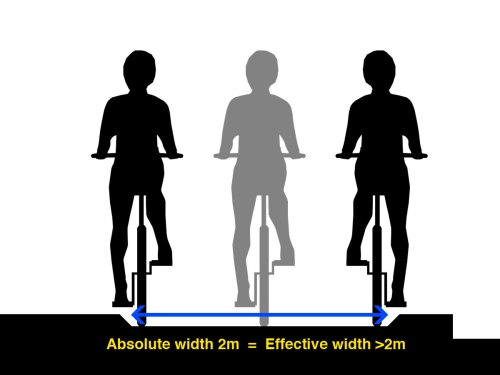
The entire width of the track can be used. Remember, the width of the surface is exactly the same as in the other diagrams above.
Here, the cycle lane (or rather, cycle path, or – even better – cycleway) has been raised up halfway between the road and the path (or, to use more technical language, halfway between the carriageway and the footway), so the footway is about 75mm higher than the cycleway (this is known as the upstand). Also note the ~30º angled “forgiving” or “splay” kerbs, which are safe to ride against, as the wheel is gently nudged back into the cycleway.
Now the full width of the track can be used – even better, as it’s safe to ride right up to the forgiving kerbs, pedals and handlebars can extend beyond the width of the cycle path, which means that the effective width is even wider. (This requires the footway to be wide enough for the comfort of people walking, and for the separation on the carriageway-side to be wide enough, too. I’ve not shown this in the diagram above.)
My diagrams may not be to scale with the outside world, but they are to scale with each other, and the Dutch-style cycle path clearly has far more capacity than the Royal College Street examples – even though the width of the surface, from edge to edge, is exactly the same width in all four diagrams.
That “Dutch CROW standard” 2 metres (which, by the way, should be a minimum, not a target) isn’t being used to its full potential at Royal College Street – indeed, it can’t physically be used by the people who ride along it – and the experience of riding on a proper Dutch cycle path of exactly the same actual width would be quite different.
North vs South
I’ve only covered the northbound lane here. The southbound lane is even more tricky, as the right-hand barrier is a row of cars, so you can’t just leave the cycle lane for a few seconds and then rejoin. The discomfort zone is also very wide due to the risk of dooring. I’m going to cover this in another post, but for now, how would you overtake this rider if they were a little further back up the hill?



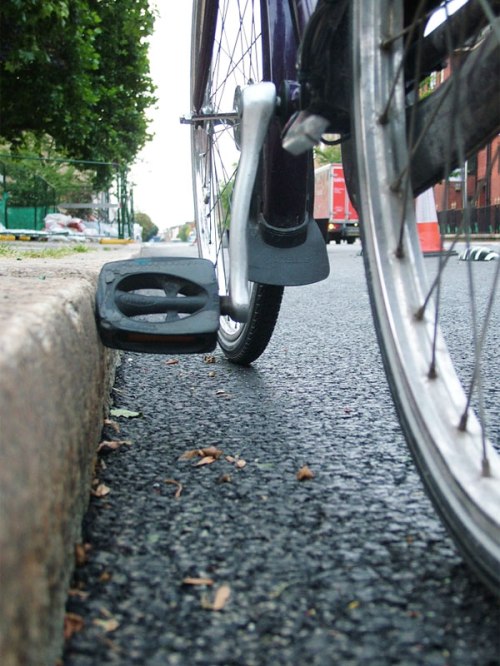
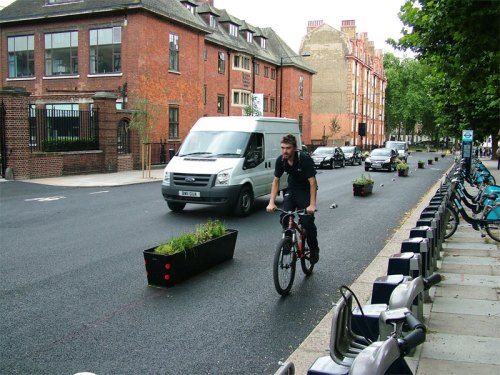
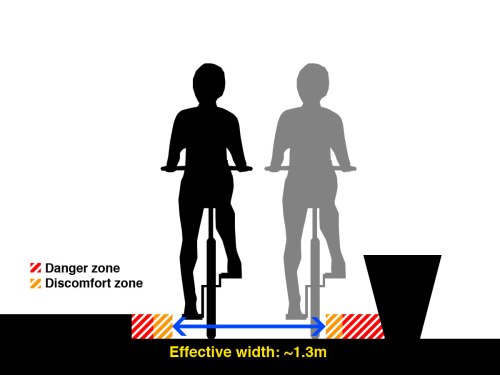
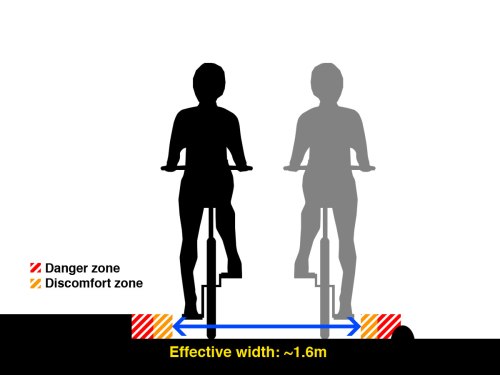
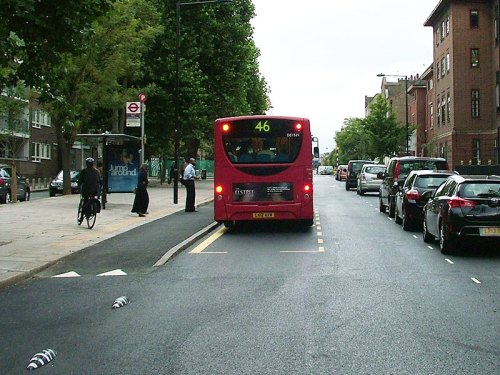
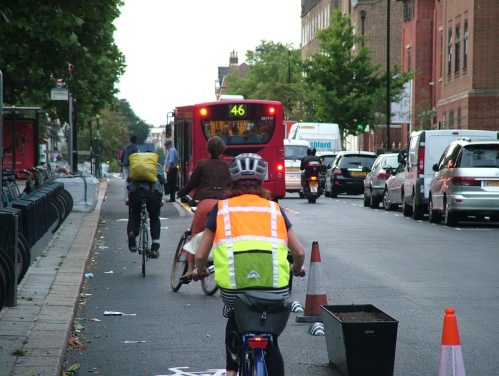
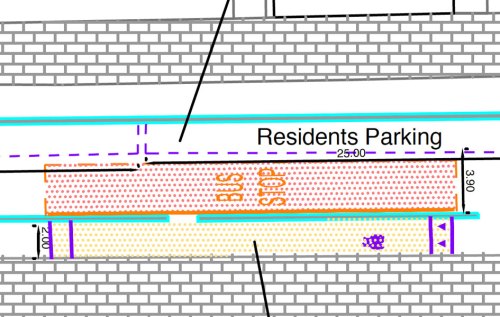
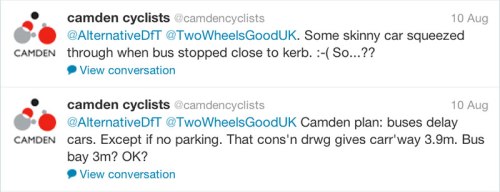
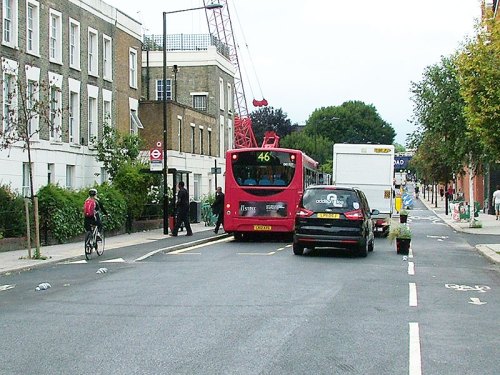
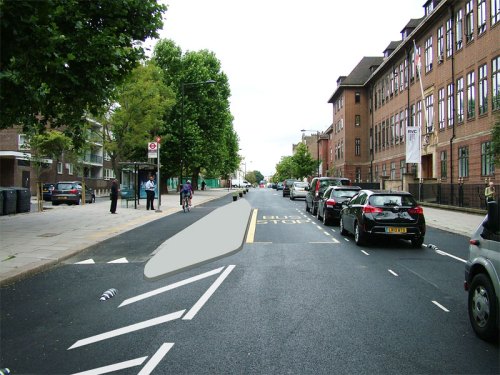
 The Alternative Department for Transport is written by, and the personal opinion of,
The Alternative Department for Transport is written by, and the personal opinion of, 


